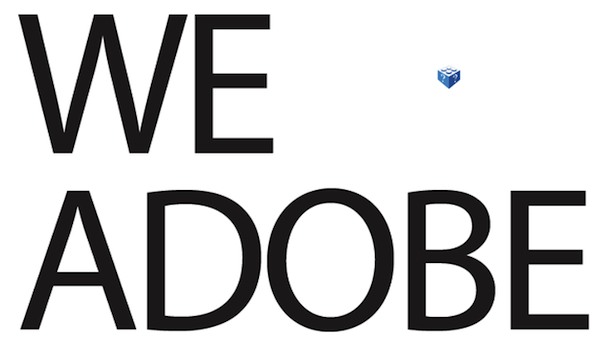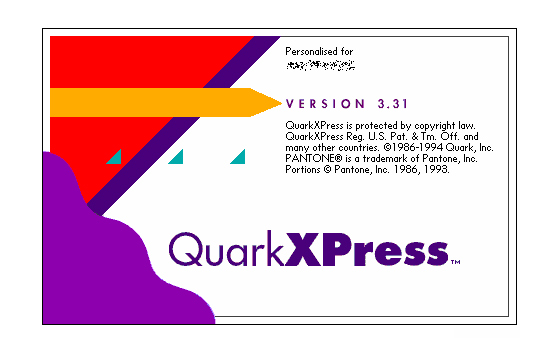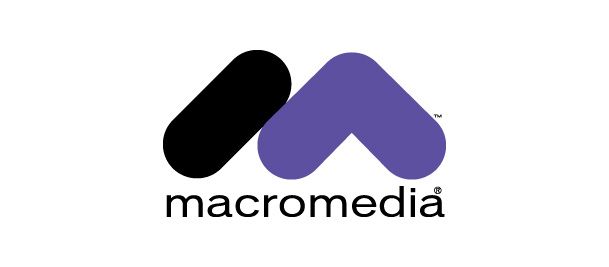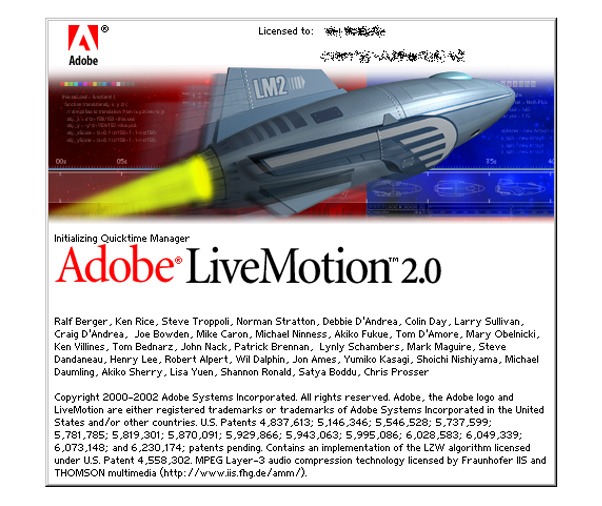
The oldest of us certainly remember a period in the DTP prehistory, where we were trapped by a software editor who possessed the license of the sole page layout software and had openly taken profit from this advantageous position by abusing its customers with ridiculous updates, its few technical evolutions, its incapacity to follow the technical evolutions with the arrival of OSX, its prohibitive prices, its deafness about its customers’ needs, forget the rest: we could even write a book ! This editor, for those who did not know this period, is Quark. In my graphic designer opinion, it ruined the life to us for years regarding DTP production.
This software imposed us technologies which became obsolete with the evolution of the DTP, in particular with the arrival of the digital. The format EPS CMJN is a coal nut which we still drag, while the hour is for a complete RVB production, the CMJN being only the final result. No, Quark imposed us the CMJN until the ultimate limit, not managing the RVB or very badly. The implementation of the PDF was difficult for the users of XPress, as well as the Opentype, the transition to 32 bits, then to 64 bits…
Given the rising dissatisfation among users, which echoed through the corridors of the AppleExpo (nostalgia…) and mainly due to the arrival of a very aggressive competitor (InDesign, but we will speak later of it), Quark Direction even apologized for the direction it had taken.

In the end, Xpress does not represent any more than about 20% market share or even less according to some figures (it is even said 95% InDesign vs 5 % XPress , but for me those numbers are most certainly false). For two years XPress has completely disappeared from radar screens, whether it is in learning at high schools, in trainings, book releases, but it is still used in some studios). It has been killed by InDesign and Adobe, Adobe that presented itself as an innovator company, listening to its customers, offering practical and efficient solutions to the graphic production issues. We owe it anyway the following: postscript (hum … ), PDF (a very big part ), layers, improving the use of profiles, partially OpenType, the use of RVB in production, the integration of the three major desktop publishing softwares (InDesign, Illustrator, Photoshop), the bases of digital publishing, the folio format, bezier curve (well, the patent especially. The invention is French.) etc…Except that this pretty picture is not so rosy, on the contrary…
Let me give you some historical facts, please !
Adobe originally created PostScript in 1982. Tadaaaaaa! Yes, Adobe is the basis of the desktop publishing revolution.Then rejected by Xerox, the creators of the language founded Adobe, responsible for selling licenses of the PostScript language. Because this language is a revolution, it is used to describe page elements, vectors and bitmaps, and allows transmission of graphical composition from a platform to another. This will revolutionize the printing with the arrival of laser printers and then the prinery, with laser imagesetters, and then CTP.Lots of money falls into the adobe funds, which then (like its appetite) grow very quickly.In 1988, Adobe is visited by a certain John Knoll, whose brother wrote a great image editing program. September 88 Adobe buys the license of Photoshop, which becomes the second graphics software of Macintosh© after MacPaint. A little story that is less known is that John Knoll went to Apple, which was also very interested in this software, and the MacPaint teams did everything to scuttle the possible purchase of the license by Apple. Just imagine: Apple Photoshop…

After Photoshop, Adobe’s appetite has become gargantuan: Aldus was bought in 1994, to acquire PageMaker, established in 1985, and have in their licenses lists a DTP software capable of countering a start-up, Quark, which was since 1987 the owner of XPress.Then it was in 1993 the invention of the PDF, designed to be able to work around the limitations of PostScript. The arrival of the web was taken very seriously with the acquisition of Macromédia in 2005, for Flash, which became in a few years an indispensable web format.

The purchase of Macromedia is not so innocent as it seems. First of all, this acquisition closes a chapter of years of litigation between the two companies for patent violation charge, plagiarism, especially about bezier curves and for the slightly different use that Freehand could do (excellent software, don’t you think, you, the elders who read me? ). The pressure from Adobe enabled the merger of the two companies, and made especially disappear many competitors: Frehand which outshined Illustrator, Dreamweaver, a popular leader facing an appreciated and yet from the home Golive, .swf face .svg , that Adobe had proposed to the W3C in 1999 (first in the form of Precision Graphics Markup Language (PGML ) which later became the .svg ). And the result was the rapid disappearance of excellent softwares.

Hegemonic, I tell you !
Adobe is imagined as an innovative company, able to create revolutions, but it is not the case! Almost all innovations come in fact from other companies that Adobe acquired and having developed their technologies or about to develop them. And those purchases are made in order to maintain their dominant market position, the one of the graphic design. And they have been so far quite successful, there is almost no competition for Photoshop or Illustrator. And XPress, dying, can hardly catch its delay face to InDesign … Although… But to maintain a dominant position, you have only two options: either to be the best and the most innovative or have so much money from your clients who have only you that you don’t give a f*** to them, to the customer, to the consumer of your products. Quark was the victim of this behavior, Apple is regularly accused of that, but what about Adobe ? Is it still a company able to innovate ?
In facts, the Adobe teams have really innovated on several points:
- The creation of postscript, but it is now an old story
- The development of the .svg, format coming from the presentation by Adobe of the PGML at W3C’s, the consortium of the web. Svg itself is not an invention of Adobe, but it is perfectly implemented in illustrator, and it served in the past as a weapon to counter the rising influence of flash before the acquisition of Macromedia. It is the failure of the .svg with LiveMotion which pushed Adobe to buy Macromedia to get a hold on Flash

- The development of PDF, a revolutionary graphics format that has shaked the graphic production. First under paid license, Adobe has made free the use of this format. We will come back to this point.
- The development of InDesign. To beat Quark, the leader in desktop publishing, Adobe had no adequate weapons with PageMaker. His column mounting system was old, coming from the printing layout systems, the image management was at its beginning, and all this in front of a a competitor who invented the text block and implemented the WYSYWYG in a desktop publishing software. InDesign is a success, because in a few years, he killed competition, also helped by a fabulous inertia of Quark on updating its software. Where InDesign turned natively on OSX, XPress was “living” in classic emulation, making problematic font management and putting many other worries.
- The introduction of digital publication. By implementing a plugin for tablet publication in InDesign, the Digital Publishing System, the publication to this new medium that is the tablet was born. A specific file format was created by Adobe, the .folio
The license of free version of Adobe
These innovations have been marked by sensational statements at Adobe, some positive, many negative. Amongst the positive ones, setting free license of PDF and FOLIO, creation of Adobe was pretty surprising, especially for the latter. If we look well at why and how, this implementation of free licensing is in fact a well established strategy.
First, a free format tends to impose itself, becoming a reference for users. This is a format that can evolve thanks to updates provided by a community acquired this format. In other words, when a format becomes too expensive to have it evolving, because limited by the technical choices of the beginning, the publisher of this format reports the weight of the development on the free community, which is actually free to change this format, or not. The web world is full of such products (SQL, PHP , Linux , Python … ) due to the fact that companies that created them will not or cannot ensure any further development. If we analyze the story of PDF, Adobe had it evolved as well as it reader by adding layers integrating more and more interactive elements, flash and 3D included. The future of PDF could have been one of the digital publication, being the only universal reader format, regardless of the medium. Yes, but in fact, Adobe has faced big flash integration difficulties, particularly in the management of ActionScript (owner and modified version of JavaScript) within a PDF and the flash plugin (the flash content of a PDF was not readable by the Acrobat plugin when the PDF was hosted on a website and read online). Then why to spend even more resources and finances to update a format so that a community proposes itself to do it for free? Especially for a format that you have amortized a long time ago and that you know it will no longer be enough profitable! Adobe did not give the PDF to users, it is discharged from the development and evolution of a format that he did not want to have the responsibility anymore.
For .folio, it is the same! Two years ago, we all applauded when this digital publication format has been put into free license. Through this strategy, Adobe has tried to impose it as a standard making free a format it already knew it was obsolete compared to the development of the HTML5, web standard that makes any publication owner format obsolete. Adobe is purely discarded on the open source community of this format development and especially its editing ! Which represent less investiments !

The CC
The CC scam Adobe has changed its business strategy when launching the CS6. IT was the first major software vendor to try the bet to rent licenses instead of selling. This is actually a sign of a deep change in the internal politics of the software giant. The slogan at Adobe is profitability. And to make it profitable for customers who jump on a version two, or even three, the best is to have them pay a little amount every monthThis is why you now rent the Creative Suite every month, well wrapped with services that bind you a little more to Adobe, but are not there to be of service! The proof? This gargantuan TypeKit bullshit. Different from one software to another, this service locks all webfont use other than the one proposed by Adobe. Try for example to put your webfont in a Muse document, for example, to use a GoogleFont in InDesign or in Edge Animate? Rather than open its software to existing services by competitors, Adobe has carefully closed everything. Another example? The introduction of online training ( AdobeTV ), while CC licenses for training centers have been slow to come. Another example? InDesign is no longer developed in the US but in India. Far from me the idea that Hindus are worse IT engineers, but I’m sure that wages are not the same… Another example: DPS is still not integrated with InDesign. Illustrator always has the same bugs for 10 years.

And you have all followed the case, because it is a case, the one of the disappearance of the DPS License Single User, that crashed a lot of small agencies and freelance people putting them in a deep s*** overnight. This is clear evidence, with these latest news, the disappearance of FormCentral (read once again about that section of electric Vincent: Forms, MCQ, shopping cart in Digital Publishing: A SOLUTION !!) to a single fact :
WE CANNOT TRUST ANYMORE ADOBE

On mid-term, Adobe has already demonstrated us for a while now its ability to give up promising solutions on the threshold of profitability. You, users of InDesign, Photoshop, Illustrator, DPS, Premiere, you, who put daily your production in the hands of tools, never forget that you depend on a firm, that, for financial reasons, can crash you, make your production choices impossible or wipe your productions.
From this fact, a finding. You want to get into the digital publication ? Forget Adobe DPS. The Adobe little strategy against its solution, the lack of final visibility shows that this solution can be abandoned overnight, as long as it remains a cash cow by bigh groups that are captive of this solution. Choose third-party publishers: Aquafadas, Origami, Twixl. Return to XPress, or Ragtime. There is Apple Pages and iBook Author. Use Gimp, pixelmator, Inkscape, Artboard. Stop using Fotolia, now owned by AdobeIn short, have Adobe understand that we are not paying pigs, that we, as users, we should be a little more listened and taken into account about the use we have on their products and our production wishes.
href="http://electricstudio.fr/news/adobe-retire-de-la-vente-dps-single-edition/" data-color-override="false" data-hover-color-override="false" data-hover-text-color-override="#fff">Button Text href="http://electricstudio.fr/news/le-format-folio-en-licence-libre/" data-color-override="false" data-hover-color-override="false" data-hover-text-color-override="#fff">Button Text href="http://electricstudio.fr/news/adobe-modifie-labonnement-dps-professionnal-edition/" data-color-override="false" data-hover-color-override="false" data-hover-text-color-override="#fff">Button Text









